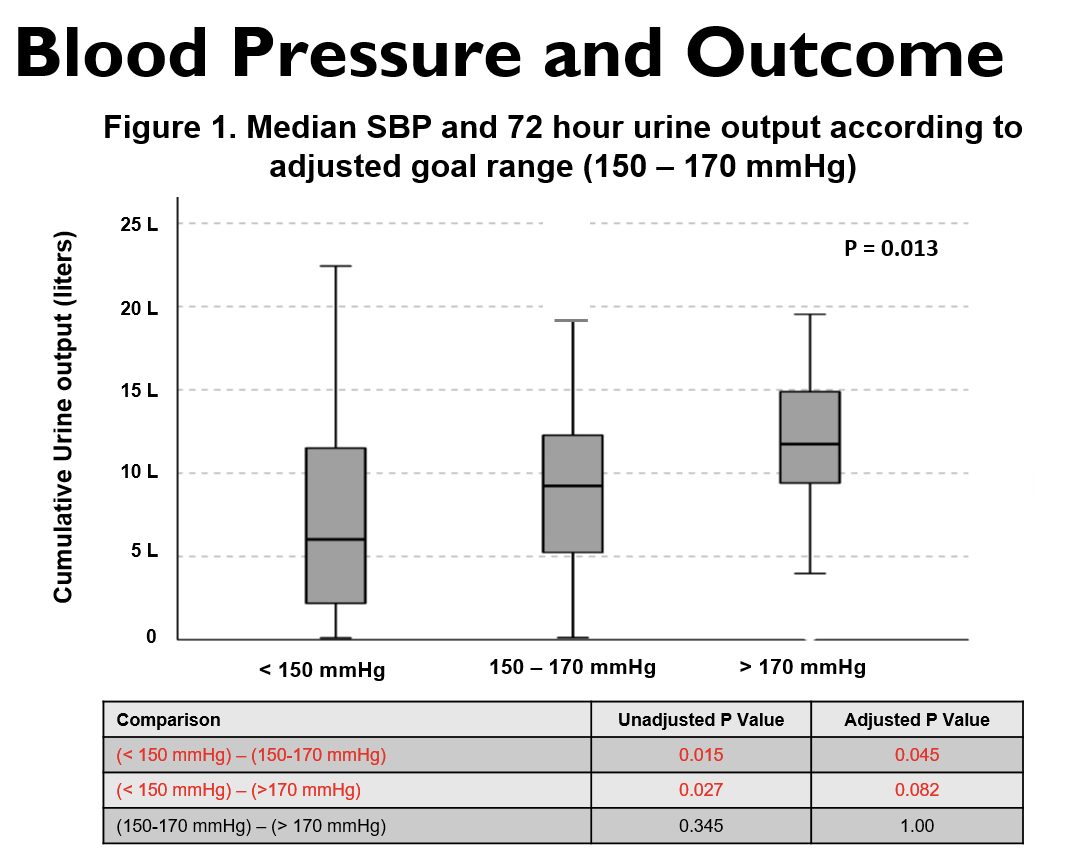Impact of Maintaining Blood Pressure Goals on Graft Function After Kidney Transplant
D. Majmundar, A. DiCarlo, S. Karhadkar, A. Diamond, K. Mohrien, P. Szczesniak
Temple University Hospital, Philadelphia, PA
Meeting: 2022 American Transplant Congress
Abstract number: 768
Keywords: Graft function, Hemodynamics, Kidney transplantation
Topic: Clinical Science » Kidney » 35 - Kidney: Cardiovascular and Metabolic Complications
Session Information
Session Name: Kidney: Cardiovascular and Metabolic Complications
Session Type: Poster Abstract
Date: Saturday, June 4, 2022
Session Time: 5:30pm-7:00pm
 Presentation Time: 5:30pm-7:00pm
Presentation Time: 5:30pm-7:00pm
Location: Hynes Halls C & D
*Purpose: Impaired graft function following kidney transplant impacts short- and long-term patient outcomes. Proper management of systolic blood pressure (SBP) in the immediate post-operative period may be beneficial for early graft function, however, optimal blood pressure (BP) control during this phase has not been well established. The aim of this study was to evaluate the effects of maintaining defined BP goals during the first 72 hours post-kidney transplant on graft function.
*Methods: In this retrospective, single-center, chart-review, all patients who received a kidney transplant at Temple University Hospital (TUH) between 8/06/2016-6/30/2020 were included. Patients were excluded if they received a multi-organ transplant. The primary endpoint of this study was urine output at 72 hours. Secondary endpoints were eGFR at 72 hours, and incidence of cardiovascular complications at 30 days post-transplant. Patients were divided into three cohorts based on median SBP values during the first 72 hours: SBP < 150 mmHg [hypotensive]; SBP 150-170 mmHg [goal]; and SBP > 170 mmHg [hypertensive]. Graft function was evaluated based on cumulative urine output and estimated glomerular filtration (eGFR).
*Results: A total of 158 patients were screened and 141 patients were included in the study. The median SBP during the first 72 hours was 151 mmHg. The difference between the three SBP cohorts (hypotensive, goal, and hypertensive) in relation to urine output was statistically significantly different (p = 0.013). Furthermore, patients with SBP values at goal experienced a statistically significantly greater 72-hour cumulative urine output in comparison to those with SBP values <150 mmHg (p = 0.045). There were no differences in mean eGFR at 72 hours between groups (p = 0.37; 22.24 mL/min vs. 28.09 mL/min vs. 23.30 mL/min). The incidence of cardiovascular complications within 30 days were not different between groups (p = 0.85).
*Conclusions: Achieving SBP values between 150-170 mmHg in the immediate post-operative period may be associated with greater 72-hour cumulative urine output. However, additional studies should be conducted to validate our findings due to small sample size and retrospective, single center design.
To cite this abstract in AMA style:
Majmundar D, DiCarlo A, Karhadkar S, Diamond A, Mohrien K, Szczesniak P. Impact of Maintaining Blood Pressure Goals on Graft Function After Kidney Transplant [abstract]. Am J Transplant. 2022; 22 (suppl 3). https://atcmeetingabstracts.com/abstract/impact-of-maintaining-blood-pressure-goals-on-graft-function-after-kidney-transplant/. Accessed December 15, 2025.« Back to 2022 American Transplant Congress

